The more you think about it, the more it confounds: Pakistan government’s peace dialogue with the Taliban. Look at it from a logical, if also conventional, standpoint, and it appears as though the Pakistani state has entered into a desultory dialogue with the Taliban which will ultimately crash on the rocks of reality. It would, however, be stretching the limits of incredulity to think that in reaching out to the Taliban, the Pakistan government is utterly unmindful of the pitfalls of dialoguing with the Islamist terrorists. Unless it is somebody’s case that the current dispensation is only interested in making its pile while serving out its time, there has to be some method in the madness. There are broadly three, maybe four, possible explanations – Simplistic, Delusory, Sinister and Labyrinthian – for this madness of going out on a limb to hold peace negotiations with the Taliban.
The simplistic explanation, one which is also quite common in the public debate in Pakistan, is that this is merely a gambit. The Taliban are being given a long rope with the conviction that they will over-reach and make unreasonable and unacceptable demands. This will pave the way for creating the elusive national consensus and provide justification and legitimacy to launch a full scale military operation aimed at eradicating their base, eliminating the bulk of their force and expelling them from Pakistani territory. Swat is often held out as an example where first a peace deal was negotiated and after the Taliban breached the red lines laid down in the agreement, a massive military operation was launched with the media whipping up a ‘national consensus’ in its favour.
The problem with ‘National consensus’ is that, more often than not, it is something of a red herring. It is brought into play more to avoid doing something rather than to facilitate some action. Swat operation was, in this sense, more of an exception. The simple fact of the matter is that forging a ‘national consensus’ on the question of a military operation against the Taliban is practically impossible because the naysayers are unlikely to ever come on board. There have been many occasions in the not so distant past where the national mood appeared to turn against the Taliban, but their supporters and sympathisers did not switch sides. Their arguments might have not have got much traction but yet they held on to them. The failure of the State to follow through with the narrative it was trying to build, once again created the space where the Taliban line started finding takers. What is more, if 50000, and counting, deaths is not enough of a justification to launch a fight to the finish against the Taliban, then merely reneging on an agreement is hardly ever going to serve as a legitimate casus belli. Therefore, the simplistic explanation isn’t robust enough to make sense of Nawaz Sharif’s peace tack.
The delusory explanation started being peddled mostly by former soldiers and their mouthpieces in the media after ‘targeted’ strikes from the air by Pakistani forces in retaliation to terror attacks on security personnel. According to this, the recent bombing runs by fighter jets and helicopter gunships on Taliban targets (aided by ‘indigenous drones’ which, it is claimed, are equipped with intelligence gathering capabilities comparable to US drones) have acquainted the Taliban with the immense firepower that the Pakistani state will bring to bear against them. This has forced them to sue for peace. The purveyors of this explanation buttress their argument by pointing to the stories of widening cleavages within the ranks of the Taliban between those in favour of talks and accommodation with the Pakistani state and those against having any truck with it. The Delusionists also claim that not only are the Pakistani Taliban are not receiving any support from the Afghan Taliban, they also fear that once the latter start controlling territory in Afghanistan, they will be left to fend for themselves. Another new element that is supposed to have injected a sense of urgency among the Taliban to seal a deal are the reports of an understanding having been reached between the Americans and the Pakistan Army to act in concert for a ‘hammer-and-anvil’ operation against the Pakistani Taliban. With an adverse politico-military situation looming, the Taliban are doing the smart thing by trying to strike a deal on favourable terms with the government. For its part, the government is also keen to settle matters without having to use military force.
The trouble with the delusory explanation is that it is based more on wishful and fanciful thinking rather than on hard facts and harsh ground realities. For one, there is no real evidence that the Afghan Taliban have either severed or are likely to sever their links with their Pakistani associates. For another, there is no sign of war fatigue among the Pakistani Taliban. They have neither suffered any debilitating loss in the airstrikes nor do they have any dearth of new recruits joining their ranks. If anything, their network, influence and strike capability inside Pakistan has only increased. There is nothing on ground to suggest any real squeeze on their finances. Most of all, while there could be an element of self-aggrandizement motivating the Pakistani Taliban leadership, the real driving force behind the Taliban is the messianic and millenarian religious zeal to which no counter narrative has been created. Casualties in Taliban ranks, therefore, are only of academic interest and not of any real military value. It is precisely for this reason that laying too much reliance on the efficacy of airstrikes in bringing the Taliban to the talks table is akin to missing the woods for the trees. Air power has been used by Pakistan in many areas and there have been the usual bombastic claims of dozens of casualties caused in these strikes, especially in Orakzai agency. And yet, despite scores of air strikes, large parts of Orakzai remain out of the control of the Pakistani state. As far as the North Waziristan Agency (NWA) is concerned, the concentration of Islamist militias in towns of the agency might have led to some initial successes in these air strikes. But chances are that the Taliban would have already adjusted to this tactic and taken counter measures.
Clearly then, if the Taliban are far from being worsted, either ideologically or militarily, it follows that they have no pressing compulsion to strike a peace deal with the authorities, unless of course it is to gain some tactical advantage. A deal serves their purpose only to the extent that it gets them time and space which they can use to consolidate their control over areas they are holding, extend their influence in new areas and sow further divisions in the ranks of their adversaries who even today are split on how to deal with the Taliban. With their allies, if not principals, the Afghan Taliban, expected to establish their “Islamic Emirate” in at least the south and east of Afghanistan post the ISAF withdrawal, the Pakistani Taliban will no longer need North Waziristan as their ‘base camp’ (ironically, a term Pakistanis loved to use for the state sponsored terrorists groups that were operating in the Indian state of Jammu and Kashmir!). The Delusory explanation, therefore, doesn’t hold much water and is only an exercise in self-deception.
The Sinister explanation is that the peace dialogue is part of the denouement, or if you will a wrapping up, of the double game that the Pakistanis played after 9/11 against the Americans. In other words, this is the endgame in the playbook by which the Pakistani military fought its shadow war against the US-led ISAF in Afghanistan for more than a decade. The corollary of this explanation is that what the rest of the world saw as a blowback of the strategy of using terrorism as an instrument of state policy was brushed aside by the top echelons of the military and intelligence establishment as nothing more than collateral damage, a small price to pay in pursuit of a larger strategic objective viz. defeat of the US-led West and ensuring domination over Afghanistan for purposes of achieving ‘strategic depth’.
Caught with a very weak hand after the 9/11 attacks, the Pakistanis played along with the Americans but kept their jihadist assets intact. As was to be expected, they couldn’t quite communicate or disclose their game plan to all the jihadists. As a result they lost control of some jihadists who felt betrayed by the ostensible shift in the policy of the Pakistani establishment. Some of these terror groups ran amok and turned their guns on their patrons. While the damage these people caused was quite substantial, it also gave the military the plausible deniability it so badly needed to successfully play this double-game. The icing on the cake was that playing the victim not only allowed the Pakistan Army to get away scot free, it also opened the floodgates of economic and military assistance. Basically, the Pakistanis got their cake and ate it too. Even though some of terror groups went ‘rogue’, many of the main players like Mullah Omar and the Haqqanis understood the intricacies of the Pakistan policy and were left completely unmolested. The ‘rogue’ militants, a.k.a. ‘bad Taliban’, were occasionally targeted when they over-reached or breached certain red-lines. At the end of the day, however, the military establishment considered many of these people as ‘misguided’ and therefore ‘redeemable’. Why else would the former ISI chief call the TTP Emir Baitullah Mehsud ‘a patriotic Pakistani’ and the current Interior Minister, Chaudhry Nisar, declare in the National Assembly that ‘majority of the Taliban were not enemies of the country….most of their groups had no animosity to the state of Pakistan’.
Now, with the Americans on their way out, the time has come to fold up the game and the dialogue with the Taliban is part of that process. The idea is to settle the matters inside Pakistan and use the Islamist storm troopers for the purpose they were created – the conquest of Afghanistan. To be sure, there will be some recalcitrant groups who will not accept the overtures of the government. These outliers will be ruthlessly eliminated; all others will be accommodated. If this ‘sinister’ explanation has any substance, it means that notwithstanding all the doomsday day scenarios being painted by analysts and observers within and without Pakistan, the Pakistani establishment still has a reasonably firm grip over the situation and is now on the cusp of achieving a great victory over the West.
The biggest trouble with this explanation is that it assumes that the genie can be put back into the bottle. The Taliban have got a taste of power as well as a sense of the weakness of the Pakistani state. There is every chance that their ambitions and their objectives have far outgrown the role that the Pakistani establishment had reserved for them. More importantly, just as the Pakistanis played a double-game with their American patrons, the Taliban could well be playing a similar double-game with their Pakistani patrons. If indeed this is the case, then the dialogue will not go very far and its breakdown will be the beginning of the unravelling of the Pakistani endgame.
The final explanation is quite Labyrinthian in its scope and character. The dialogue is a big gamble that Nawaz Sharif is taking not for any other reason but for the simple fact that there are no good or viable options on offer. It is a long shot aimed at gradually bringing things back to normal and snuffing out the Taliban threat to the state with patience and perseverance in order to bring a paradigm change in the objective conditions that gave rise to or added fuel to the flames of jihadist activity. Elements of this argument that follows have been made by various people in responsible positions in Pakistan, but no one has really articulated it in a structured manner.
The bottom line of this argument is that the Pakistani state is in no position to defeat the Taliban, militarily or ideologically. Launching a military operation against the Taliban will not solve the problem because it won’t win the peace. Rather it will enmesh the military in a quagmire which will only worsen the existential crisis of the state. The dilemma is that while the Pakistani state cannot fight, it also cannot give up without a fight, a fight that in any case it is unlikely to win in a meaningful way. Therefore, it is imperative to think of an alternative strategy, which has an outside chance of working, albeit in the medium to long term, and the dialogue is a critical part of this strategy. There are two components of this strategy. The first component applies to the trans-Indus belt i.e. FATA and to an extent Khyber Pakhtunkhwa and Pashtun areas of Balochistan; the second one applies to the cis-Indus belt i.e Punjab and Sindh and to an extent the Baloch belt of Balochistan.
In FATA and other pockets of the Pashtun belt, a new reality has emerged in the form of a new elite that has arisen by force of arms and by killing most of the old elite – Maliks, Sardars and Elders. Most of this new elite never counted for much in the past because they belonged to the lower and lower middle class. Someone was a driver, someone a bus conductor, chair-lift operator, gym instructor, tailor, iron-smith etc. But as Taliban commanders and cadres, they have become empowered. Their ideological motivations aside, this new elite cannot be wished away, much less exterminated. The emergence of this elite is not a new phenomenon. In this turbulent region, every time there is destabilisation or unrest, a new elite emerges. When the British moved into this area, a new leadership emerged from among those who resisted the British – some of them going on to form their own Kingdoms, Swat being one example. The British accommodated these people and worked out an arrangement with them under which they were given titles, subsidies and privileges in exchange for accepting a loose control by the Raj over these areas. There were occasions when some Tribesmen would get restive and the Raj responded with punitive expeditions. The rules of the game were however accepted by both sides. The arrangement worked until the Soviet invasion of Afghanistan, when the entire region got destabilised and the old system broke down.
Through the dialogue with the Taliban, the Pakistan government is probably recognising the new reality and adjusting to it. As far as FATA is concerned, Pakistan has always had a ‘one country two system’ model– the normal Pakistan law did not apply to FATA which is still governed under the Colonial FCR. There is therefore no reason why the same model cannot be tweaked by making the TTP and other sundry Islamist warlords - the new Maliks and Sardars in the areas they control and putting in place a legal framework that satisfies their Islamist agenda. In other words, impose Shariah (the Taliban version) in the areas they control. Alongside put in place a system of subsidy to bribe and buy these people and give them an incentive to limit themselves to these areas. There will be howls of protest from the liberals in Pakistan, but they can be ignored since they are now merely a fringe group. With the Afghan War 2.0 winding down, the withdrawal of the foreign forces will remove the casus belli which according to many Pakistani analysts lit the fires of jihad.
A radically different approach based on massive development programmes will be followed in rest of Pakistan. To a great extent, this can only work if the first component of the strategy is successful. Assuming that FATA settles down and violence levels are significantly reduced, Nawaz Sharif thinks he will be well placed to usher in a burst of economic activity by attracting foreign investment, providing an environment for domestic investment to pick up and getting huge amounts of assistance from friendly countries. The Economic Corridor project – rail, road and pipeline network from Gwadar to Xinjiang funded by the Chinese – is part of this plan, as are the power plants, industrial parks etc. which are being envisaged. While Asif Zardari planted the idea of a ‘Marshall Plan’ of $ 100 billion to pull Pakistan out of the rut in which it finds itself, Nawaz Sharif hopes to be the person who actualises this idea. Senior ministers are bandying figures ranging from $20-$50 billion of investment in the next five years. Already the Saudis are opening the purse strings and have ‘gifted’ $ 1.5 billion to Pakistan. There are reports that other Gulf states are going to follow. The multilateral financial institutions – IMF, World Bank, ADB and IDB – have also opened the tap of funds. The Americans might not give much post 2014, but they are indicating that they will facilitate the flow of funds. The Europeans are also making encouraging sounds with the British taking the lead in pumping in money. The Chinese are busy signing MOUs on a variety of projects (though it must be said that most of the MOUs that the Chinese have signed in the past haven’t really taken off). The Japanese are showing interest in funding some mega projects.
If all this money starts flowing in, Nawaz Sharif calculates that it will provide such a massive fillip to economic activity that it will keep the people occupied gainfully and profitably and wean them away from being attracted to Jihad. This is a narrative that Pakistanis have often sold to the gullible West, which has readily lapped it up without ever questioning why even when the Pakistan economy was doing well the people were attracted to radical Islam. Be that as it may, once the cis-Indus region starts booming, it will naturally start having an impact on the trans-Indus region and slowly but surely the Pakistani state will be able to turn things around, extending the writ of the state in areas where it has vanished and at the same time moderating the extremist ideology which has taken root in many sections of society. There would of course remain those elements who, intoxicated by Jihadist fervour, might suffer some withdrawal symptoms and need their jihadist fix. For them, the Nawaz Sharif government could find new battlegrounds – Syria being one possibility, Kashmir being another and hotspots around the world where these guys could peddle their jihadist wares. As for the rest of Pakistan, Nawaz Sharif could always bring in legal and constitutional ‘reforms’ that conform to the Islamic laws that many of the mullahs are demanding.
The way Nawaz Sharif would see it, this plan is the best shot he has under the circumstances. Given that the policy menu that is on offer has only a series of bad options ranging from outright surrender to total war, this labyrinthian approach is probably the best of all the bad options. If it works, there is a very good chance that all will be well; if it doesn’t, then what will happen is something that would have happened in any case without this plan. But clearly, there are huge problems in this plan which raises serious doubts about its ever working. The first problem is that it doesn’t take into account the nature of the beast, i.e. the Taliban or the radical Islamists. These people cannot be confined to a small geographical area where they can do what they feel. By definition, they see the world as their playground because Islam, according to them, cannot remained confined to man-made borders. Therefore, it is natural for them to export their brand of Islam beyond the areas they control. Second, the assumption that the government can buy and bribe its way out of this problem is quite iffy. The Taliban have no dearth of money even now. Their smuggling, kidnapping, extortion rackets and the charities that fund them generate enough for them to keep going. Then there is the ever present danger of demands arising from rest of Pakistan to impose the same Islamic system and the cosmetic or even substantial ‘reforms’ that Nawaz Sharif might bring in to appease them will never be enough because competitive Islamism will come into play. Finally, Pakistani policymakers and analysts often brush under the carpet the inconvenient fact that Talibanisation of FATA did not start post 9/11 or even around 2004 when the army moved into the area.
While radical political Islam made an entry as a result of the Afghan war against the Soviets, Talibanisation started soon after the Taliban captured Kabul in 1996. Inspired by the success of the Taliban, small groups started erupting all over FATA declaring themselves to be local Taliban. Many of these groups later coalesced under the umbrella of Tehrik-e-Taliban Pakistan. Therefore, merely the exit of the foreign forces isn’t going to remove the fundamental cause that gave rise to this phenomenon, even less so considering that the Afghan Taliban are expected to start holding sway over large swathes of Afghanistan. The fact that the Taliban successfully resisted the most powerful military force and forced it out will serve as a shot in the arm of their local affiliates. What is more, if indeed the Taliban control all or parts of Afghanistan, they are unlikely to forget the unstinting support that their associates in Pakistan gave them. Nor are they likely to forget the treatment many of them received at the hands of their Pakistani intelligence handlers.
Elements of all the four explanations outlined above would probably be factors that would be guiding the stock that Nawaz Sharif has placed in the store of a dialogue with the Taliban. At the same time, he would also be conscious of the problems and pitfalls that lie in the way and the very real possibility that despite his best efforts to avoid an outbreak of hostilities, the Pakistani state might have to wage a war to the finish with the Islamists. If things start spiralling out of control, Nawaz Sharif will probably opt for targeted and surgical operations in the first instance. But these are unlikely to help very much one way or another in stopping the haemorrhaging that is pushing the Pakistani state towards complete collapse. At the end of the day, if the Pakistani state, as it is currently constituted, has to survive, it will have to bring out all the elements of its national power to launch a ‘Total War’ on the Taliban, and the sooner the better because the more the delay, the more difficult it become to win this war. The big question is whether it is already a little too late.
Published Date: 25th March 2014, Image source: http://i.telegraph.co.uk

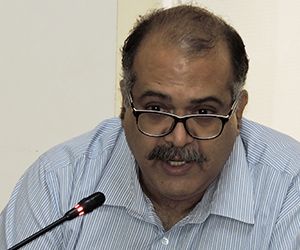


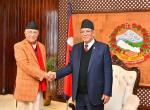
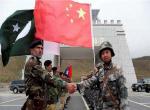

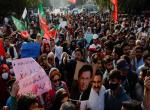
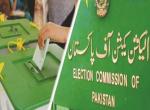
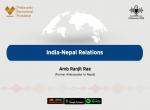
Post new comment